#bulletin of atomic scientists
Explore tagged Tumblr posts
Video
youtube
(via The Doomsday Clock has been adjusted – and, look, it's not good news)
#science#Doomsday Clock#climate crisis#global warming#warfare#Russia#China#America#artificial intelligence#AI#avian-influenza#Bulletin of Atomic Scientists
1 note
·
View note
Text
“The members of the Science and Security Board have been deeply worried about the deteriorating state of the world. That is why we set the Doomsday Clock at two minutes to midnight in 2019 and at 100 seconds to midnight in 2022. Last year, we expressed our heightened concern by moving the Clock to 90 seconds to midnight—the closest to global catastrophe it has ever been��in large part because of Russian threats to use nuclear weapons in the war in Ukraine.
Today, we once again set the Doomsday Clock at 90 seconds to midnight because humanity continues to face an unprecedented level of danger. Our decision should not be taken as a sign that the international security situation has eased. Instead, leaders and citizens around the world should take this statement as a stark warning and respond urgently, as if today were the most dangerous moment in modern history. Because it may well be.”
#bulletin of atomic scientists#doomsday#doomsday clock#midnight#russia#ukraine#putin#nuclear weapons#nuclear war#wwiii#world war 3
1 note
·
View note
Text
The hand was now advanced to indicate three minutes to the hour.
"Brighter than a Thousand Suns: A Personal History of the Atomic Scientists" - Robert Jungk, translated by James Cleugh
#book quote#brighter than a thousand suns#robert jungk#james cleugh#nonfiction#magazine cover#graphic design#bulletin of atomic scientists#final countdown
0 notes
Text
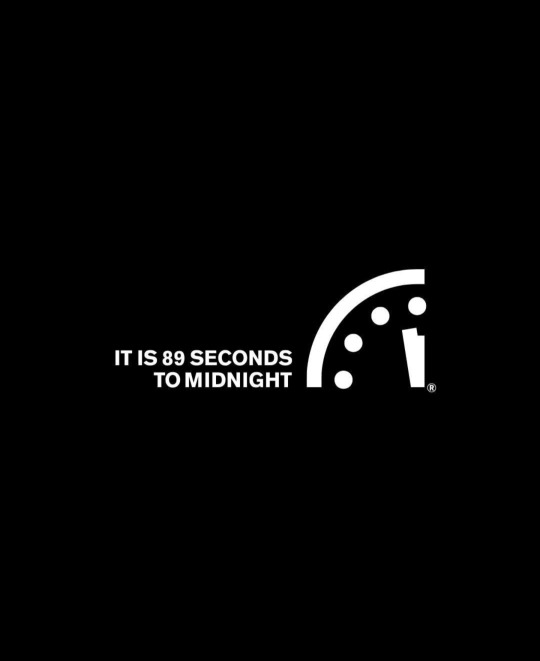
The Bulletin of Atomic Scientists has officially declared it 89 seconds to midnight, the closest the doomsday clock has ever been. If you are capable, I would recommend reading this article for more information:
My understanding and thoughts are under the cut.
So, for anyone who doesn't know, the Bulletin of Atomic Scientists was originally founded to monitor the nuclear threat (mostly people formerly from the Manhatten project) and the clock was set to 3 minutes during world war 2 and I think 100 seconds during the cold war.
In 2022 it was set to 90 seconds.
Also they now have added climate change, biological threats, and disruptive technology to the list of threats to human civilization (along with the original nuclear risk).
89 seconds to midnight on the Doomsday clock is fucking terrifying. The Bulletin has said that it is not beyond saving and they sincerely hope that by next year they will be able to move the clock back and not forwards, however this will require significant change in the world. It will rely on those in power making merciful decisions and choosing to sit down and discuss things peacefully.
As Nelson Mandela, one of the founders, said: "The most powerful weapon in the world is to sit down and talk".
I'm scared. Truly and honestly I am scared. But there is nothing I can do other than keep living. Keep supporting those around me however I can and never shut up about the injustice in the world. We have got to just keep going.
#important#bulletin of the atomic scientists#doomsday clock#doomsday#hope#world news#news#89 seconds
5 notes
·
View notes
Text
Somehow a nice approach, one could learn from history. But if the educational political interests do not exist in the political classes as well as in the rest of society, but only in a few humanists (sorry, a little joke, of course more than five), this will not happen.
We are caught in a cycle of knowledge and forgetting in such rapid succession that we simply do not learn collectively across generations from all the mistakes ever made.
mod
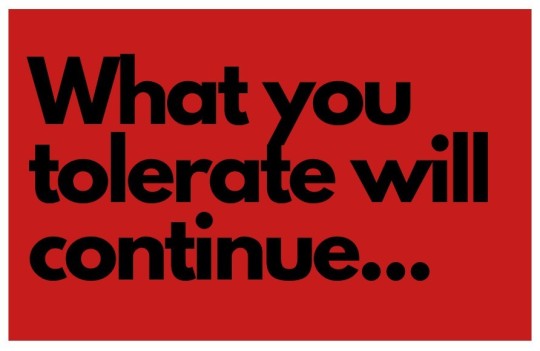
Who would have believed that fascism would ever become socially acceptable again after the Second World War? And so we move on to the next repetition of history, at the end of which everyone shakes their heads again and says, ‘How could this happen?’ And then we immediately shout, ‘Never again,’ and yet we take the first step in the wrong direction.
#freedom of expression#galelry mod#reality#history#again and again#humanity#The stupidity of repetition#bulletin of the atomic scientists#mod studio#a plague comes before the fall#all we need is love#all we need is understanding#we are one
5 notes
·
View notes
Text
89 seconds to midnight.
2 notes
·
View notes
Text
"My guess is that we'll be able to read last night's election results in the geological record many millennia hence" - Bill McKibben
in "America elects a climate change denier (again)" by Jessica McKenzie
#us politics#donald trump#trump#climate change#climate crisis#extreme weather#bulletin of the atomic scientists#bulletinoftheatomicscientists#2024 election#us election 2024#2024 presidential election#us presidential election#us presidential race#presidential debate#2024 presidential race#voters#president#candidates#senate#kamala harris#election#harris#presidency#potato potatoes once again
5 notes
·
View notes
Text

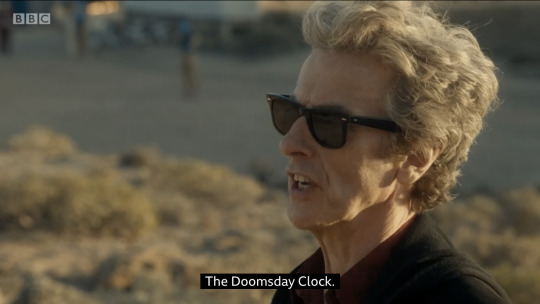
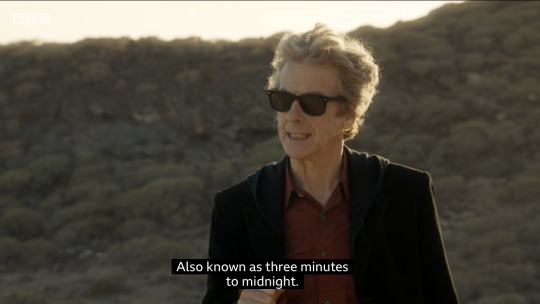

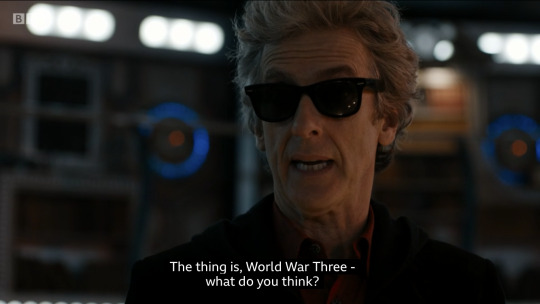
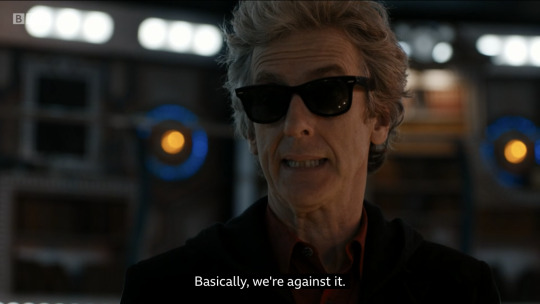
somehow in light of recent geopolitical events i feel a little synchronicity in this house tonight
#the bulletin of atomic scientists actually put it at 90 seconds to midnight YESTERDAY#so. hello 2017 we're actually doing far worse#dw#jamie catches up#the pyramid at the end of the world#world war 3#jamie.txt#doctor who#twelve
14 notes
·
View notes
Text
'Blink and you’ll miss it.
In a scene in the new Oppenheimer film set right after the successful 1949 atomic bomb test by the USSR, there is a brief exchange between the film’s two main antagonists. Lewis Strauss, chair of the Atomic Energy Commission, asks J. Robert Oppenheimer what he thinks should be done now. “International control,” Oppenheimer immediately replies.
“You mean world government?” Strauss fires back.
It sounds like a throwaway line, or one of those accusations routinely hurled at those trying to make global institutions marginally more effective. But in this case, Chairman Strauss’ epithet was spot on.
The tremendous destruction of World War II, even before Hiroshima and Nagasaki, prompted a radical rethinking of the world political order. In particular, the idea of world government as the solution to the problem of war was placed front and center in this country’s foreign policy debate, and argued about passionately in diners, dorm rooms, and dinner parties all across the land. Unfortunately, however, the legions of moviegoers who buy tickets to Christopher Nolan’s otherwise excellent film this summer will have no idea that one of the leading proponents of that singular idea was J. Robert Oppenheimer.
After the bomb was dropped on Hiroshima, Oppenheimer threw himself into working to control nuclear weapons. Like other atomic scientists, he was fully aware that the Soviet Union would likely develop its own atom bombs in just a few years, and that time was short to prevent an unrestrained nuclear arms race. The movie refers to his activities as working for “international cooperation.” But his actual ideas were much deeper and more radical than those anodyne words imply.
In 1946, Oppenheimer participated in the development of a report for the secretary of state’s Committee on Atomic Energy about what might be done to control nuclear weapons. The report, which became known as the Acheson-Lilienthal Report but which was authored chiefly by Oppenheimer himself, proposed an international Atomic Development Agency that would have the sole right to mine and process uranium and to run reactors of any kind. This was a radical proposal, but, as its authors explained, they could see no alternative.
In June 1946, Oppenheimer published an article in The New York Times Magazine explaining the proposal to the public. The article discussed the relationship between peaceful and military uses of atomic energy, evaluated a couple of other ideas for controlling atomic weapons, and then discussed the proposed Atomic Development Agency.
It is here, in a section entitled “Sovereignty,” that we come across a striking passage:
“Many have said that without world government there could be no permanent peace, and without peace there would be atomic warfare. I think one must agree with this. Many have said that there could be no outlawry of weapons and no prevention of war unless international law could apply to the citizens of nations, as federal law does to citizens of states, or we have made manifest the fact that international control is not compatible with absolute national sovereignty. I think one must agree with this.”
Similarly, in a January 1948 article for Foreign Affairs magazine, Oppenheimer wrote:
“It is quite clear that in this field we would like to see patterns established which, if they were more generally extended, would constitute some of the most vital elements of a new international law: patterns not unrelated to the ideals which more generally and eloquently are expressed by the advocates of world government.”
From the vantage point of 2023, the remarkable thing about these passages is the apparent assumption that the reader is familiar with the idea of world government, and arguments for and against it, to the point where they can just be mentioned without explanation or elaboration. And for much of the public for much of the 1940s, this was probably true—as remarkable as it might seem to us today, when this notion is entirely absent from the international affairs debate.
Even before the end of the war, world government advocacy had become a prominent feature of the political conversation in America. In 1943, the businessman and Republican presidential candidate Wendell Willkie published a book called One World. The book sold 1.5 million copies in the four months following its release and played a key role in a blossoming of world federation advocacy—long before virtually anyone had heard of anything like an atomic bomb. To choose but one example, an organization known as the Student Federalists, founded in 1942 by a charismatic 16-year-old boy named Harris Wofford, over the next several years formed 367 chapters on high school and college campuses around the country. (Wofford went on to become a United States senator and a key civil rights aide in the White House of President John F. Kennedy.)
Then in 1945, just a few months before the Trinity test, came Emery Reves’ The Anatomy of Peace. While Willkie’s book was a travelogue describing his voyage around the world, Reves’ was an extended logical argument that only law could create peace and only a world federation—a union of nations with a government taking care of issues that could not be handled at the national level—could create meaningful law that applied to individuals rather than governments. Indeed, Oppenheimer’s passage above could have easily been a summary of Reves’ book.
It is worth noting that both of these books were published before the United Nations Charter was more than a draft. (It was eventually signed on June 26, 1945, less than a month before the Trinity test.) The activism they inspired attempted to make the UN something more than an agglomeration of sovereign states that could sign treaties with each other, but in the end were subject to no law worthy of the name. Sovereignty meant that no state could be compelled to do anything it didn’t want to, and treaties could only be enforced by sanctions or war, not through legal action against individuals. (Citizens and various organizations could also take the government to court if it is not properly carrying out its functions, as they can in the U.S.)
It wasn’t just books. Beloved children’s book author and New Yorker editor E. B. White devoted a great many of his editorials to the problem of global anarchy. (These were later collected and published in a book called The Wild Flag: Editorials From The New Yorker on Federal World Government and Other Matters.) Saturday Review editor Norman Cousins, upon reading about Hiroshima, wrote a lengthy editorial for his magazine titled “Modern Man is Obsolete,” that passionately argued for immediate democratic world federation. “There is no need to talk of the difficulties in the way of world government,” wrote Cousins. “There is need only to ask if we can afford to do without it.”
In a similar vein Walter Lippmann, a founder of both The New Republic magazine and the Council on Foreign Relations, and a key player later in the Cuban Missile Crisis, wrote in 1946: “There are few in any country who now believe that war can be regulated or outlawed by the ordinary treaties among sovereign states. … No one can prove what will be the legislative, executive, and judicial organs of the world state … but there are ideas that shake the world, such as the ideal of the union of mankind under universal law.”
Even General Hap Arnold, the only U.S. Air Force officer ever to hold the rank of five stars and founder of the RAND Corporation, said in 1946: “The greatest need facing the world today is for international control of the human forces that make for war.” The atom bomb, he declared, presents “a tremendous argument for a world organization that will eliminate conflict. … We must make an end to all wars for good.”
And before the end of the decade, more than 50,000 Americans had joined the United World Federalists (UWF)—led for three years by a bright young man named Alan Cranston, who went on to serve as a four-term U.S. Senator from California. UWF has continued its operations to this very day and is now known as Citizens for Global Solutions.
A number of physicists also came to support world federation. “Conflicts in interest between great powers can be expected to arise in the future … and there is no world authority in existence that can adjudicate the case and enforce the decision,” said Leo Szilard, who first conceived the nuclear chain reaction. But humanity had at its disposal, he insisted, “the solution of the problem of permanent peace. … The issue that we have to face is not whether we can create a world government … (but) whether we can have such a world government without going through a third world war.”
But the most prominent and most active proponent of world government among scientists was Albert Einstein himself. He had always opposed nationalism, and supporting world federation was a natural extension. Einstein wrote articles, gave interviews, and helped found the Emergency Committee of Atomic Scientists. The Student Federalists of Princeton, New Jersey, held meetings in his living room. And he served as the founding advisory board chair of the United World Federalists.
The type of world government that Einstein promoted would exclusively have power over security issues and a few internal circumstances that could lead to war. But this kind of limited world government was a must. “A new kind of thinking is essential if mankind is to survive and move to higher levels,” he said. “Often in evolutionary processes a species must adapt to new conditions in order to survive. … In light of new knowledge … an eventual world state is not just desirable in the name of brotherhood; it is necessary for survival.”
Oppenheimer’s focus in the postwar years was more near-term. He worked for international control of nuclear matters—both weapons and civilian reactors that could be used to make weapons. But that international control was to take the form of an agency with a strict monopoly on such activities. His 1946 New York Times Magazine piece says about the plan: “It proposes that in the field of atomic energy there be set up a world government. That in this field there be renunciation of national sovereignty. That in this field there be no legal veto power. That in this field there be international law.”
Why would this be significant? In a lengthier article published in 1946 in the Bulletin of the Atomic Scientists, Oppenheimer wrote, “The problem that we are dealing with,” in seeking to prevent atomic war, “is the problem of the elimination of war.” Proposals for addressing nuclear issues were to be judged on whether they also advanced this goal. The article was titled “The Atom Bomb as a Great Force for Peace”—not because of the simplistic and banal argument that the bomb would make war too horrible to contemplate, but because its control would lay the foundation for a world government that truly could abolish war.
Even Edward Teller, accurately portrayed in the Oppenheimer film as pushing for the development of the immensely more destructive hydrogen bombs and eventually undercutting his colleague at the security hearings, appeared to embrace the idea! In 1948, he discussed the Preliminary Draft of a World Constitution, written by a committee of eminent scholars chaired by the chancellor of the University of Chicago, Robert Maynard Hutchins, and aimed at establishing a Federal Republic of the World. And Teller said about this enterprise: “[America’s] present necessary task of opposing Russia should not cause us to forget that in the long run we cannot win by working against something. Instead we must work for something. We must work for World Government.”
And in his 1948 Foreign Affairs article, again Oppenheimer maintained: “If the atomic bomb was to have meaning in the contemporary world, it would have to be in showing that not modern man, not navies, not ground forces, but war itself was obsolete.”
At the end of this essay, Oppenheimer returned to the noble aspirations that so many held in the shattering initial weeks after Trinity, Hiroshima, and Nagasaki. “The aim of those who would work for the establishment of peace,” he insisted, “must be to maintain what was sound in the early hopes, and by all means in their power to look to their eventual realization. It is necessarily denied to us in these days to see at what time, to what immediate ends, in what context, and in what manner of world, we may return again to the great issues touched on by the international control of atomic energy. … (But) this is seed we take with us, traveling to a land we cannot see, to plant in new soil.”
Should we consider all this just a mere historical curiosity? Is anything about these conversations eight long decades ago relevant to the challenges of the 21st Century? As politically unlikely as it might now appear, might something like a genuine world republic provide humanity with the kinds of tools it will require to get a grip on existential perils like the climate emergency, runaway artificial intelligence, and who knows what kinds of new weapons of mass extermination that Oppenheimer’s heirs will almost surely invent in the decades and centuries to come?
The best possible answer to that is the same one purportedly given by China’s Premier Zhou Enlai in 1971, when asked by Henry Kissinger what he thought about the consequences of the French Revolution.
Mr. Zhou, the story goes, considered the question for a moment, and then replied: “I think it is too soon to tell.”'
#Oppenheimer#Lewis Strauss#Zhou Enlai#Atomic Energy Commission#Acheson-Lilienthal Report#Wendell Willkie#One World#Emery Reves#The Anatomy of Peace#Bulletin of the Atomic Scientists#Albert Einstein#Edward Teller#Henry Kissinger
3 notes
·
View notes
Text
A simple timeline of Iran’s nuclear program
"Former President Barack Obama revealed that Iran had built another secret nuclear site. The Fordow site was buried deep within a mountain that protected it from attack."
## Bulletin of the Atomic Scientists ##
June, 2025: Iran had rejected a deal to create a regional Middle East nuclear consortium that would supply fuel for nuclear power reactors. The consortium would have taken control of Iranian enrichment capabilities, meaning Iran would no longer be able to undertake a step that is critical to both nuclear power and nuclear weapons on its own territory.
February 2021: Biden wanted Iran to return to abiding by the limits imposed by the JCPOA before he lifted US sanctions. Iran, on the other hand, wanted the choreography to be reversed. By the end of Biden’s term, there was little to show for diplomatic efforts to revive a nuclear agreement.
June 2010: A malicious computer worm known as “Stuxnet” -sometimes described as “the world’s first digital weapon” infected the Natanz underground nuclear enrichment site, destroying about 1,000 centrifuges.
September 2009: Former President Barack Obama revealed that Iran had built another secret nuclear site. The Fordow site was buried deep within a mountain that protected it from attack. Obama said at the time that its configuration was “inconsistent” with a peaceful nuclear program. Some experts estimate now that the facility could produce enough material for a nuclear weapon in less than a week.
August 2002: An Iranian opposition group revealed secret underground nuclear facilities at Natanz and Arak meant for enriching uranium and producing heavy-water, respectively.
Iran’s nuclear program has been a long-standing problem. Many US presidential administrations have struggled with it, as have many international organizations and foreign governments.
#news#bulletin of the atomic scientists#timeline#iran#hamas#israel#palestine#nuclear#nuclear weapons#uranium#natanz#arak#gaza#gaza strip#united states#joe biden#barak obama#nuclear program#donald trump#fordow#jcpoa#nuclear facilities#nuclear bomb#houthis#air strikes#benjamin netanyahu#islam#muslim#politics#science
0 notes
Text
"Because the world is already perilously close to the precipice, a move of even a single second should be taken as an indication of extreme danger and stuff. It is 89 seconds to midnight."
Right. "A second". I bet these nice folks wish they had waited another month before making the 2025 statement.
#Doomsday Clock#2025#Doomsday Clock 2025#If you knew their baseline and then saw February you'd think it should be down a lot more than ONE SECOND.#Bulletin of the Atomic Scientists#thebulletin.org#We are fucked before the year ends at this rate.
0 notes
Text
Borrowed time and borrowed world and borrowed eyes with which to sorrow it.
“Today, the Doomsday Clock was set to 89 seconds to midnight, the closest to midnight ever in its 78-year history. It’s the duty of the United States, China, and Russia to lead the world back from the brink. Humanity’s continuing existence depends on immediate action from the world’s leaders.”
1 note
·
View note
Text
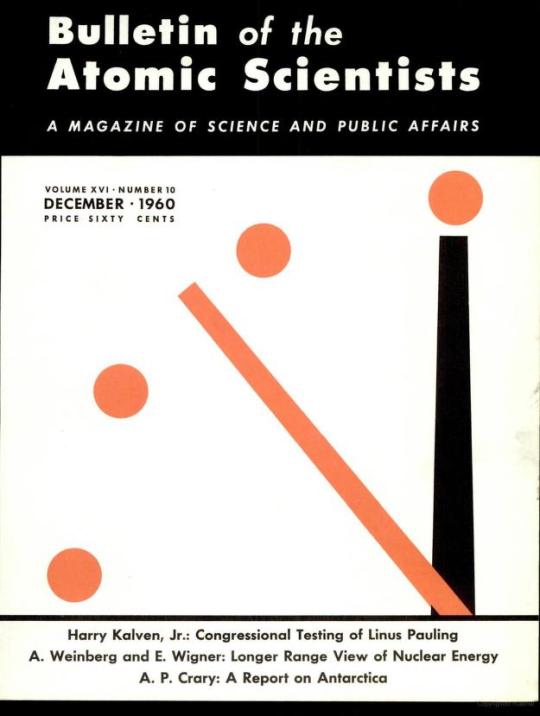
Bulletin of the Atomic Scientists : Educational Foundation for Nuclear Science, Inc. : Free Download, Borrow, and Streaming : Internet Archive
0 notes
Text
"I tried to warn people. Except that the warning was not well received by everyone. A person accused me of being a “climate militant,” a suggestion that I’m embellishing extreme weather threats to drive an agenda. Another simply said that my predictions were “an exaggeration.”
But it wasn’t an exaggeration."
John Morales, atmospheric and environmental scientist and a fellow of the American Meteorological Society in an article of @TheBulletinOfTheAtomicScientists
#Bulletin of the Atomic Scientists#John Morales#Fellow of the American Meteorological Society#climate change#Hurricane Helene#Climate Change#Climate Crisis#Climate Goals#Protect The Planet#There Is No Planet B#Climate Change Reporting#Climate Journalism#Covering Climate Crisis#Our Home In Space#Fossil Fuel Caused Climate Change#Clean Energy Now#Climate Activists#Climate Activism
5 notes
·
View notes
Text

"Pandora's box had been opened and monsters had come out. But there had been something hidden at the bottom of Pandora's box. Something wonderful.
Hope."
-- Lisa Marie Rice in her book 'Breaking Danger'
#doomsday#doomsday clock#90 seconds to midnight#war#global warming#wars#breaking news#global news#climate catastrophe#catastrophic#world news#bulletin of the atomic scientists#book quotations#book quote#quotes
1 note
·
View note
Text
Relógio do Juízo Final alerta
O Relógio do Juízo Final, projetado para alertar sobre os perigos para a humanidade, está se aproximando assustadoramente da meia-noite (que representa o fim dos tempos). Em 2023, pela primeira vez na história, os ponteiros desse dispositivo simbólico chegaram à marca de 90 segundos para a meia-noite. Alessandro Di Lorenzo – Olhar Digital. 16/11/2023 O dispositivo simbólico foi criado no…

View On WordPress
#90 segundos meia-noite#Alessandro Di Lorenzo - Olhar Digital#dispositivo simbólico#início Guerra Fria #Projeto Manhattan#Relógio do Juízo Final alerta: nunca estivemos tão próximos do fim#responsável pelo desenvolvimento da bomba atômica#revista Bulletin of Atomic Scientists
0 notes